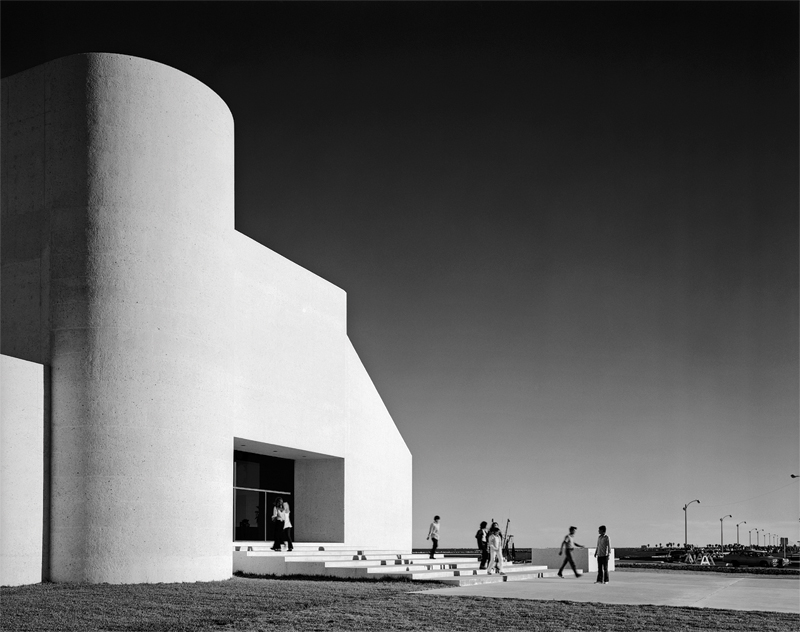The Man in the Glass House: Philip Johnson, Architect of the Modern Century
by Mark Lamster
Little, Brown and Company, 2018, $35
When I learned that Mark Lamster — architecture critic for the Dallas Morning News and associate professor in practice at the College of Architecture, Planning, and Public Affairs at The University of Texas at Arlington — was writing a biography of Philip Johnson, my immediate reaction was “Why?” Johnson had been the subject of Franz Schulze’s comprehensive (if not particularly admiring) biography of 1994, as well as of numerous monographs on his buildings (such as Richard Payne’s “The Architecture of Philip Johnson,” 2002) and more specialized studies (such as Frank D. Welch’s “Philip Johnson and Texas,” 2000). Was there more to learn about Johnson and his inconsistent architectural production? The answer turns out to be yes. One reason is that Lamster has a journalist’s gift for the memorable phrase. This makes his book enjoyable to read. The other is that he doesn’t become exasperated with Johnson, as Schulze did. Lamster patiently analyzes Johnson’s emotional and behavioral contradictions. While troubled by such phenomena as Johnson’s anti-Semitism, Lamster tries to understand why Johnson persistently engaged in behavior that was bound to provoke reaction. Lamster’s willingness to work through his subject’s issues humanizes Johnson in ways that even Johnson sought to disguise as he fashioned for himself the role of modern tastemaker in American architecture and culture.
Lamster organizes his account chronologically: Johnson’s upbringing as the son of encouraging but emotionally remote parents in early 20th-century Cleveland, his formative travels in Europe in the 1920s, and his six-year tenure at Harvard University. Lamster devotes full coverage to Johnson’s career as an innovative museum curator at the Museum of Modern Art from 1930 to 1934 — as well as his inglorious excursion into right-wing populist politics, and eventually Fascism, during the mid and late 1930s. When, in 1940, at age 34, Johnson returned to Harvard and its Graduate School of Design to study architecture, he recovered his social respectability and displayed his customary panache by building his graduate thesis — a glass-walled, flat-roofed, modern courtyard house — as his stylish bachelor pad in Cambridge, Massachusetts (1942). The “bachelor” part coded Johnson’s other issue, his homosexuality, which he would not publicly acknowledge until the 1980s.
The second half of the book is devoted to Johnson’s architectural practice. Lamster charts his progress from a proponent of Ludwig Mies van der Rohe during the 1950s to a champion of New Formalist “elegance” during the 1960s to a sleek corporate architect beginning in the 1970s. Here, Lamster goes beyond Schulze to examine the evolution of Johnson’s office, identifying first Richard Foster, then John Burgee, as the architects Johnson brought in to handle the tedious management, financial, and project oversight details, thus freeing him to be Philip Johnson. Lamster makes readers aware of how Johnson used his personal charisma and cultural assets to craft a persona of cultural authority and attract such ambitious clients as Dominique and John de Menil and eventually Gerald D. Hines. Lamster is attentive to Johnson’s need for skilled in-house administrators who could make his apparatus function smoothly (and, by the late 1970s, profitably), but he also observes Johnson’s inability to reward these functionaries emotionally and thereby retain their loyalty. Lamster recognizes Johnson’s generosity: as a competition juror delivering jobs to Richard Rogers and Renzo Piano and to Michael Graves; or by referring jobs that came to his office to Venturi, Scott Brown, for instance, or Taft Architects. Yet, as Lamster demonstrates, Johnson put down Burgee and obscured the contributions of his right-hand man John Manley and Israeli designer Eli Attia in the production of his most iconic buildings because Johnson needed to be seen as the star of the show.
Lamster is biting in his critique of Johnson’s postmodern work. He singles out the Crescent in Dallas and the University of Houston Architecture Building for their shallowness. Lamster notes that, as the Johnson/Burgee practice began to founder at the peak of its commercial success, Johnson played his celebrity-hood for all it was worth to show that he still counted, even mobilizing his homosexuality to get the job for the Cathedral of Hope in Dallas in 1995, a project rescued from triviality by the conscientiousness with which Dallas architect Gary Cunningham, FAIA, detailed the one built component, the Interfaith Peace Chapel (2010).
Whereas the embittered tone of Schulze’s Johnson biography reflected his unstated assumption that a cultural authority ought to be an artistic hero, Lamster recognizes that outstanding figures can possess deep flaws. Like Paul Goldberger’s “Building Art: The Life and Work of Frank Gehry” (2017) and Mary Carolyn George’s “O’Neil Ford Architect” (1992), Lamster critically analyzes styles of architectural practice to reveal what happens when persona management conflicts with office politics. It is Lamster’s willingness to explore the mechanics of constructing and managing an artistic persona that makes The Man in the Glass House such a worthwhile and rewarding inquiry into Johnson’s life and career.
Stephen Fox is a fellow of the Anchorage Foundation of Texas.





1 Comments
Stephen: Book reviews rarely grab my attention, but your introduction to Lamster’s book The Man in the Glass House has made my morning. Thank you!